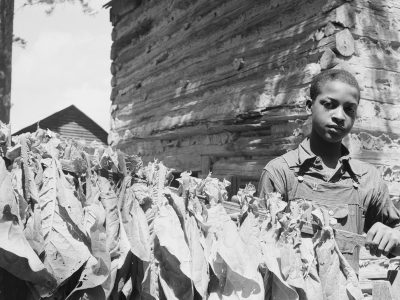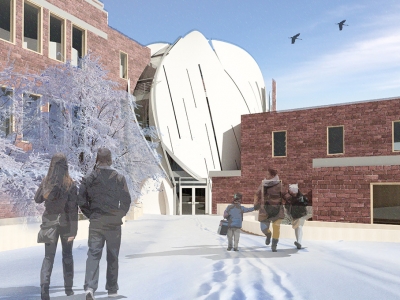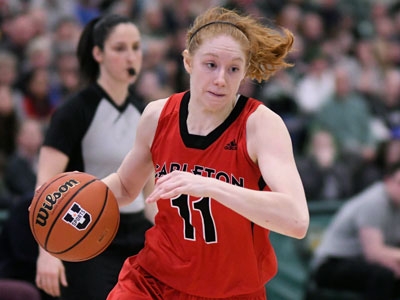Learn more about these new additions to Carleton’s faculty and their dedication to the advancement of teaching and learning, while integrating Indigenous ways of knowing and being into their curriculums.
Andrés López
Assistant Professor, School of Indigenous and Canadian Studies
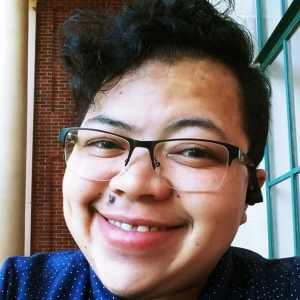
Andrés López
Andrés Lopez (he/him or they/them) is an Afro-Indio-Jamaican-Guatemalan-Trans-Queer scholar. His interdisciplinary work centers Indigenous and Black feminist theorizing and methodologies, and encompasses historiography, Cultural Rhetorics, and Queer Indigenous Two-Spirit Studies. His research uses a Maya backstrap weaving methodology to rewrite active memory recouperations of the Guatemalan Civil War and bring Maya queer and trans ancestors who might be erased not just from physical archives, but also from larger collective memories, back into community. This woven historiographic work creates a different type of woven history that complicates traditional understandings of Maya experiences, one that remembers the realities and interconnections of multiple diasporas within Guatemala, the United States, and Canada.
What will you be teaching in the 2021/2022 academic year?
I’ll be teaching two courses this upcoming fall: INDG 1010: Introduction to Indigenous Peoplehood Studies, where students and I use story as a way to re-learn dominant histories and centre Indigenous knowledge-making. Students then use story to figure out their own responsibilities to Indigenous communities and for their final projects students practice making something for an audience outside of our class to create change.
I’ll also be teaching a graduate course CDNS 5202: Gendering Canada: Selected Contemporary Debates. This course is a little bit more like a special topics course, so the content changes depending on the year and who teaches it. I’m developing a version of this course that will be either a trans politics course, a queer of colour critiques course, or a combination of the two. My vision for the course is to have students engage with queer and trans of color scholarship to shift the center and the origin stories of what is imagined as queer studies and/or trans studies.
What does it mean to you to teach these subjects to your classes?
I’ll start by saying that all the work that I do, be that in the classroom or through my research, is intended to help support and sustain my own communities. As an Afro-Indigenous queer and trans scholar and educator I have responsibilities to my own communities that require me to constantly make room for others like myself to be able to imagine themselves in these spaces. I know that I’m currently in the position to do this type of work because there were other people who carved out space for me to be here, who mentored me through programs and job markets, who let me see myself reflected in academic spaces that were not created for me but that I currently occupy. Teaching students to me, is about making the space for them to be able to also see themselves reflected in what we learn together. So really, teaching what I teach is how I keep and maintain my responsibilities to my communities.
How do you approach the concept of history?
“History” is a series of stories that have been repeated over time. The history that is typically taught in school, dominant, colonial, or imperial history if you will, is an incomplete set of stories. My approach to histories is informed by Aurora Levins Morales and her concept of “medicinal histories,” which she describes as multiple types of histories/stories meant to return to the colonized the missing pieces of their own stories. To truly learn and remember our community histories/stories, we need to do the hard work of sifting through colonial histories for the pieces left behind, but also to use our own methodologies (i.e. backstrap weaving, beading, leather work, etc.) to wake up the stories that are still there but went dormant as a response to colonization.
Omeasoo Wahpasiw
Assistant Professor, Azrieli School of Architecture and Urbanism
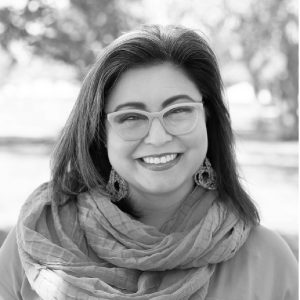
Omeasoo Wahpasiw
Omeasoo Wahpasiw (she/her) is a nehiyaw iskwew living in Anishinabe territory. Her PhD dissertation is titled Tla’amin Housing, Architecture and Home Territories in the 20th Century: Invisible spaces Shaping Historical Indigenous Education. It explores the ways in which Indigenous people have maintained their cultural and spatial heritage even while forced to inhabit architecture that follows colonial paradigms. Omeasoo co-wrote the Federation of Sovereign Indigenous Nations Women’s Commission submission to the National Inquiry into Missing and Murdered Indigenous Women and Girls and 2SLGBTQQIA+ People. For the past several years, she has been an Assistant Professor in the Department of Education at the University of Prince Edward Island, where she led a suite of courses on Indigenous culture and values, and the emerging legacy of the residential schools. Omeasoo is cross appointed with Carleton’s School of Indigenous & Canadian Studies.
What will you be teaching in the 2021/2022 academic year?
In the fall term I will be teaching CDNS 6900 (the PhD course seminar for the School of Indigenous and Canadian Studies), and INDG 3015: Indigenous Ecological Ways of Knowing and the Academy. In the winter term I will be teaching ARCH 5200 (Master of Architecture course) and I will also teach CDNS 5003/INDG 4011: Indigenous Representations.
In my courses I attempt to centre Indigenous worldviews, focusing on Indigenous scholars and my own experience and nehiyaw perspective. I seek to embody holistic teaching and learning methods. I want participants to bring their full selves to the course material and interactions with myself, colleagues and the material.
What does it mean to you to teach these subjects to your classes?
I love teaching as an opportunity to continue my own growth and learning, from the material, the challenges of teaching and learning, and the wealth of insights and knowledge brought by students. I find people to be on a very broad spectrum on their knowledge of the topics I teach. With high expectations for how they continue to learn and grow beyond class, I love to challenge participants to be creative, have fun, and bring their best skills and the willingness to learn and develop new skills, to class. I invest in people, and I hope that in recognizing their humanity, they find themselves drawn into mine.
How do you approach the concept of history?
I have always loved history, because I love stories. Recognizing life as a string of stories that place us where we are, how we got here, and where we might go, I have a deep appreciation for the expertise that individuals bring to their own lives. I also want to support people to uncover each of these answers, so that together, where we go is perhaps more beautiful and connected than where we started.
K. Jake Chakasim
Assistant Professor, Azrieli School of Architecture and Urbanism
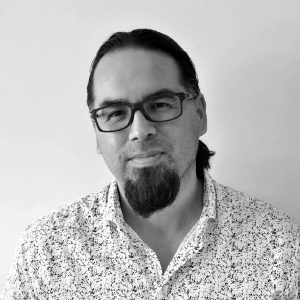
K. Jake Chakasim
Jake Chakasim (he/him) is a Cree from the Mushkegowuk Territory situated in Northern Ontario, also known as Treaty 9 or the James Bay Treaty. His approach to design education is based on phronesis, a type of ‘practical wisdom’ thus ensuring the ways Indigenous people express themselves are not to be seen (or considered) as anecdotal evidence but worthy of critical discussion. He brings forward a cultural narrative about the way Indigenous practitioners come to bare the historical injustices imposed upon indigenous communities and the sociological forces that continue to shape and often ill define the working relationships with Indigenous communities.
“Currently I’m teaching Intro to Architecture (ASAU), a cross-disciplinary Special Topics Elective (SICS) and a Graduate Option Studio (ASAU). With each of these courses, I foreground Indigenous issues as they pertain to the built environment. Indigenous architecture is a medium to understand our relationship to people, place, and potential through traditional and contemporary forms. I also include ideas that relate to Indigenous planning and engineering. Understanding these disciplines and how they are interrelated gives the students in my courses a better sense as to why First Nations communities are challenged with inadequate housing, boil water advisories, lack of water infrastructure, are affected by the social determinants of health and well-being, including why we have more First Nations people in the urban (built environment) than the rural environment. Not only is it challenging but it also very dynamic as many non-Indigenous students come to measure their understanding of Indigenous issues against their own life experience, their own identity, including their non-Indigenous history (learning of place) that takes shape at Carleton University on Indigenous lands — coming to know the ‘Land Beneath Our Feet’ — and that to me is where and when the idea of Land Acknowledgements become more than engaging, interesting, and provocative as opposed to the trite commentary we are starting to see and experience.”
—
See the full list of Indigenous faculty members at Carleton.
Tuesday, June 14, 2022 in Architecture, Faculty of Arts and Social Sciences, Faculty of Engineering and Design, Indigenous
Share: Twitter, Facebook
